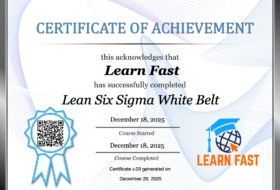When it comes to the topic of sustainability, there is a troubling trend that needs to be addressed. While sustainability is often discussed as an important goal for businesses and organizations, the reality is that there is a vast amount of evidence pointing to the opposite – unsustainability.
In many contexts, we can observe a cycle of changes that hinder the ability to achieve long-term sustainability. These changes can take the form of leadership turnover, shifts in ownership, fluctuations in the marketplace, or simply the ever-evolving nature of business circumstances. As a result, organizations find themselves constantly abandoning or cycling through one major initiative, program, or change after another.
This constant cycle of change and abandonment poses a significant challenge to the pursuit of sustainability. It undermines the stability and consistency required to establish sustainable practices and initiatives. While organizations may have good intentions and set ambitious sustainability goals, the reality is that these goals often fall by the wayside as circumstances change.
Leadership turnover, for example, can have a profound impact on sustainability efforts. When a new leader takes the helm, they may have different priorities or a different vision for the organization. This can lead to a shift in focus away from sustainability and towards other pressing concerns. As a result, sustainability initiatives may be deprioritized or completely abandoned, leaving the organization in a state of unsustainability.
Similarly, changes in ownership can disrupt sustainability efforts. When a company is acquired or undergoes a change in ownership, the new owners may have different values or priorities. This can result in a shift away from sustainability and towards short-term profit maximization. The focus on sustainability may be seen as a hindrance to immediate financial gains, leading to a neglect of sustainable practices.
Marketplace fluctuations also play a role in the challenge of sustainability. The ever-changing market dynamics and consumer demands can create a sense of uncertainty for organizations. In an effort to stay competitive and meet market demands, organizations may prioritize short-term strategies over long-term sustainability. This reactive approach can hinder the establishment of sustainable practices and lead to a cycle of unsustainability.
Lastly, the general changes in business circumstances can further complicate the pursuit of sustainability. Economic downturns, technological advancements, and other external factors can force organizations to adapt and make difficult decisions. In these challenging times, sustainability may be viewed as a luxury that organizations cannot afford. As a result, sustainability initiatives may be put on hold or abandoned altogether.
It is important to acknowledge these challenges and work towards overcoming them. While the talk of sustainability is often seen as positive and necessary, it is crucial to address the underlying issues that hinder its achievement. Organizations must strive for stability, consistency, and long-term commitment to sustainable practices, despite the inevitable changes they may face.
In conclusion, the troubling talk of sustainability stems from the overwhelming evidence of unsustainability in many contexts. The constant cycle of change and abandonment makes it difficult for organizations to establish and maintain sustainable practices. Leadership turnover, changes in ownership, marketplace fluctuations, and general changes in business circumstances all contribute to this challenge. It is essential for organizations to acknowledge and address these obstacles in order to truly achieve sustainability.









